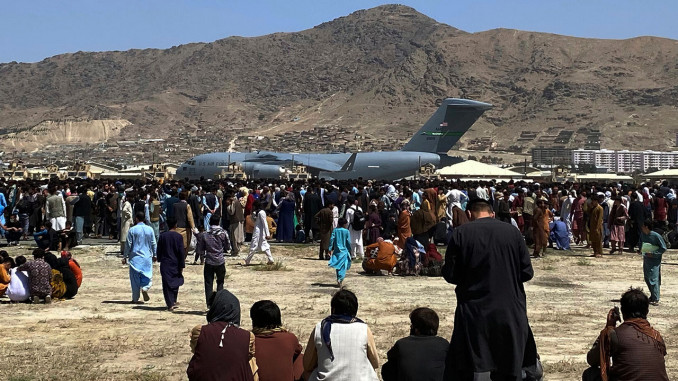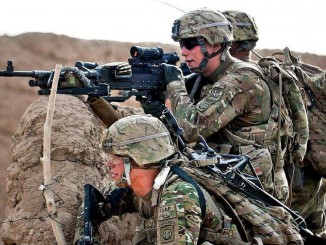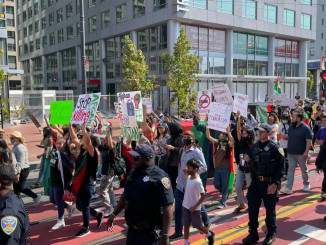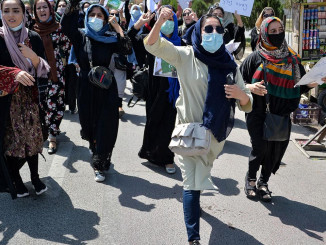
On August 15th, Taliban forces took power in Kabul, the capital of Afghanistan and much of the city erupted in chaos. Tens of thousands of people tried to flee the country and thousands tried to get to the airport. The media was filled with horrific scenes of people falling from the outside of an airplane and being crushed by panicked crowds. The situation has become more disastrous each day. A branch of ISIS detonated a bomb at an entrance to the airport, killing more than 170 people, including U.S. military personnel and there have been other attacks.
The chaos has exposed the reality of the U.S. occupation of Afghanistan. Tens of thousands of people are in danger in the face of the new Taliban regime. They had become part of the economy that developed with the U.S. occupation. Military, human rights, media, development, and other organizations relied on the Afghan population to carry out its 20 years of occupation of the country.
And now, as U.S. citizens and some Afghans are whisked away on planes, tens of thousands of their Afghan co-workers and families have been left to fend for themselves.
The U.S. has spent more than $1.3 trillion dollars carrying out a war in a country of 39 million people. That means it spent more than $33,000 for every person – in a country with a per capita income of about $500 per year. Since the U.S. invasion in 2001, more than 71,000 civilians have been killed, more than 25% of them killed by the U.S. trained Afghan army. In addition, an undetermined number were killed by the 60,000 bombs dropped on the country. Malnutrition and disease have taken the lives of hundreds of thousands more. Over the last 20 years eight million people have fled the country and 29 million were displaced internally.
Politicians and the corporate media expressed shock and surprise at the rapid conquest of the Taliban and the dissolution of Afghan forces. Their response is either a reflection of stupidity or just plain lies. The Taliban is not unknown to the U.S. government, nor to Afghans who lived under its rule.
The Taliban grew out of forces trained by the intelligence force of Pakistan (the ISI) and supported by the U.S. and Saudi Arabia. Over time they became part of the regional mujahideen militias that fought against the occupying forces of the Soviet Union.
The Soviet Union’s occupation, from 1979 to 1989, killed an estimated 500,000 Afghans. The Taliban entered into the civil war that erupted between the regional militias after the Russians left. They gained support as peace keepers, and took power in 1996, with the active support of Hamid Karzai, the U.S. pick for president in 2001. Karzai is now on the three-member transition team handing power to the Taliban.
The U.S. invasion of Afghanistan in 2001 pushed the Taliban from power, supposedly in retaliation for the terror attacks on Sept. 11. The successive Afghan governments the U.S. has imposed served U.S. interests, not the people of Afghanistan. The U.S. goal was control. Massive corruption was the rule.
The appointed heads of regional and local governments, as well as the heads of the military took the funds for themselves that were supposedly for local projects or to support the troops. Often Afghan troops were not paid, went without food and ammunition, and experienced high casualty rates. Commanders inflated their troop numbers in order to receive more funds by not reporting men who had been killed or claiming men who never existed. These same commanders and government officials received money from the Taliban to order members of the army to surrender during the recent Taliban advances.
The U.S. occupation has devastated Afghanistan and now leaves a country in turmoil and collapse. It only has served the interests of the U.S. ruling class –against the interests of the majority of Afghan people, and working and poor people in the U.S. as well.




